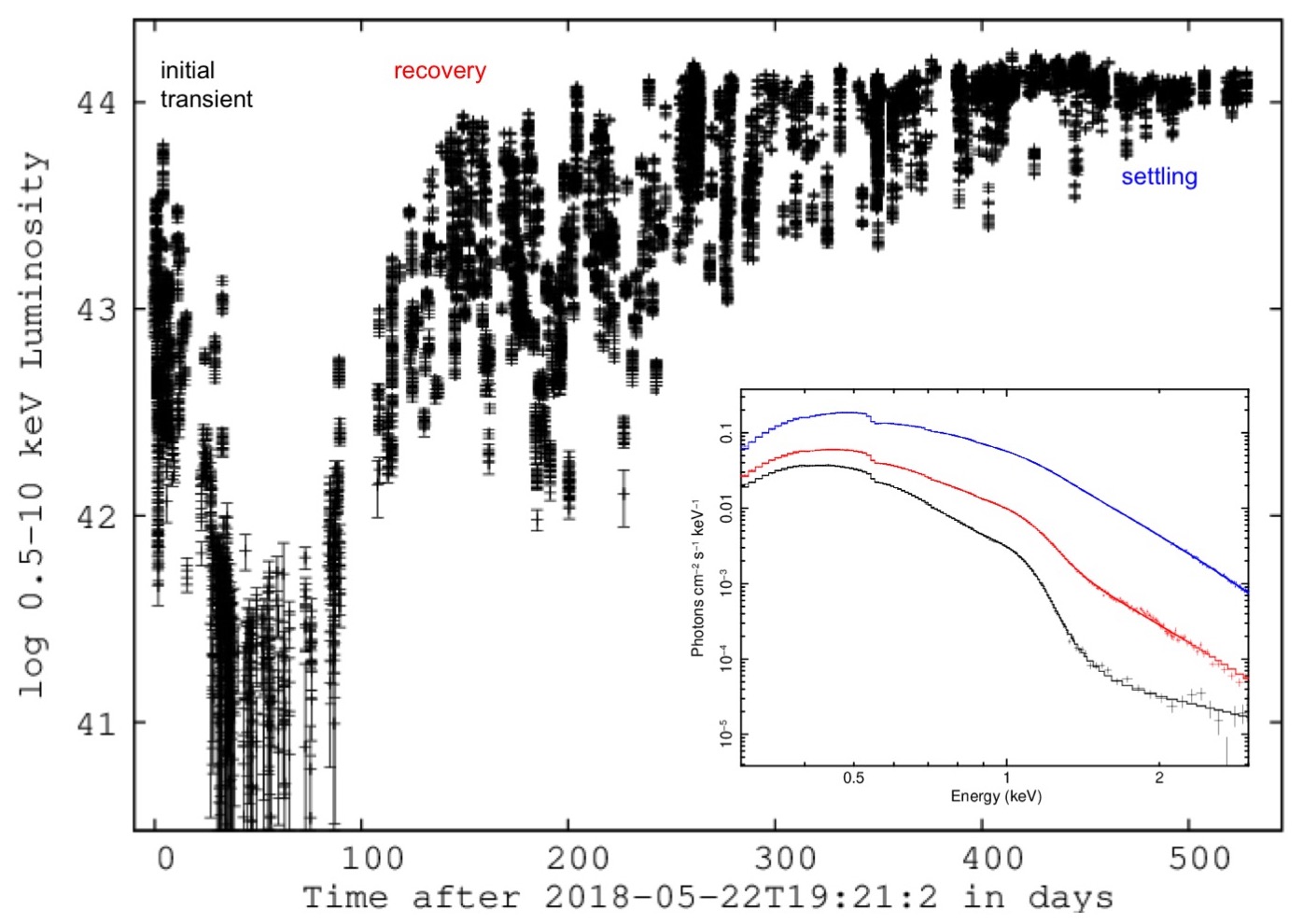NICER / ISS Science Nugget
for January 23, 2020
NICER catches a "Changing-Look AGN" in process of changing
Material accreting onto supermassive black holes in the nuclei of galaxies is compressed and heated to millions of degrees,
generating radiation that makes these active galactic nuclei (AGN) the most luminous objects in the universe. Reprocessing in
a hot corona located above the accretion flow produces X-ray emission that may be studied by X-ray observatories such as
NICER. AGN may be divided into two broad classes (Type 1 and Type 2) based on their optical and X-ray properties. It has long
been suggested that all AGN are the same type of object, simply observed from different viewing angles; however, examples of
objects that appear to transform from one type to another are being discovered in increasing numbers. The reason for such a
transition in these "Changing-Look AGN" (CLAGN) is not well understood.
As described in our May 24, 2018, weekly report NICER responded to an optical transient event in the Seyfert galaxy 1ES
1927+654 that may have been caused by a "tidal disruption event" (TDE), where a star venturing too close to the galaxy's
central black hole is torn apart. Optical monitoring indicated that this event precipitated a transformation from a Type 2 to
Type 1 AGN – the first time that a CLAGN has been "caught in the act."
Regular NICER monitoring of 1ES 1927+654 over the last 18 months has revealed a uniquely tumultuous evolution (see figure):
the X-ray flaring counterpart of the initial optical transient event, followed by an extended period of quiescence (as if the
TDE disrupted the accretion flow and corona), and then recovery to levels that made 1ES 1927+654 the brightest AGN in the
X-ray sky – all the while varying by factors of ~100 as the source slowly settles down. At the same time, as shown in the
inset, the NICER X-ray spectrum is evolving from that more typical of a TDE to that of a more stable AGN.

Figure:
NICER measured X-ray luminosity (in ergs/sec, log scale) of the active nucleus of galaxy 1ES 1927+654, over a nearly 18-month
span following an optical transient in December 2017. The inset shows the NICER X-ray spectrum evolving from the earliest days
(black) through the recovery (red) and into the current settling (blue) periods, becoming progressively brighter and harder
(i.e., dominated by higher-energy X-ray photons).
NICER continues to monitor 1ES 1927+654 to see if it eventually returns to something like its initial state, or something altogether different.
<< Previous
Main Index
Next >>